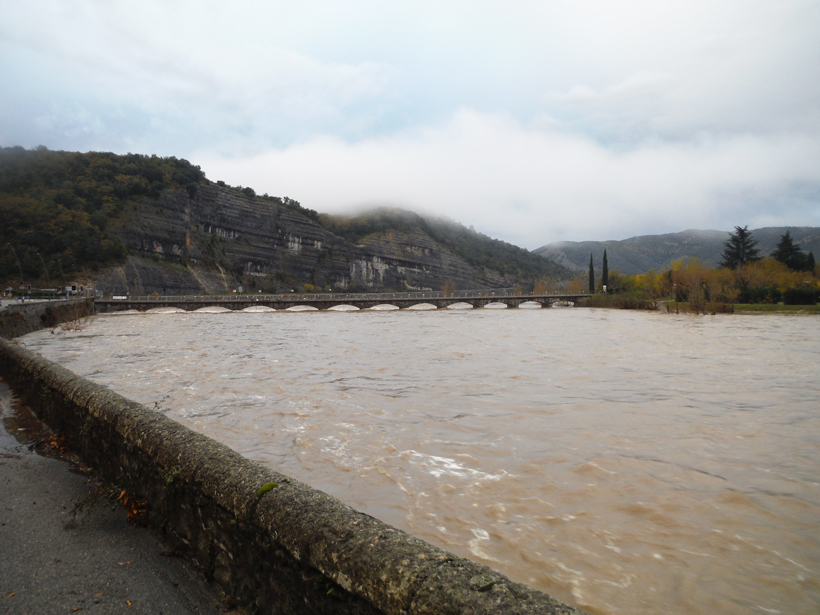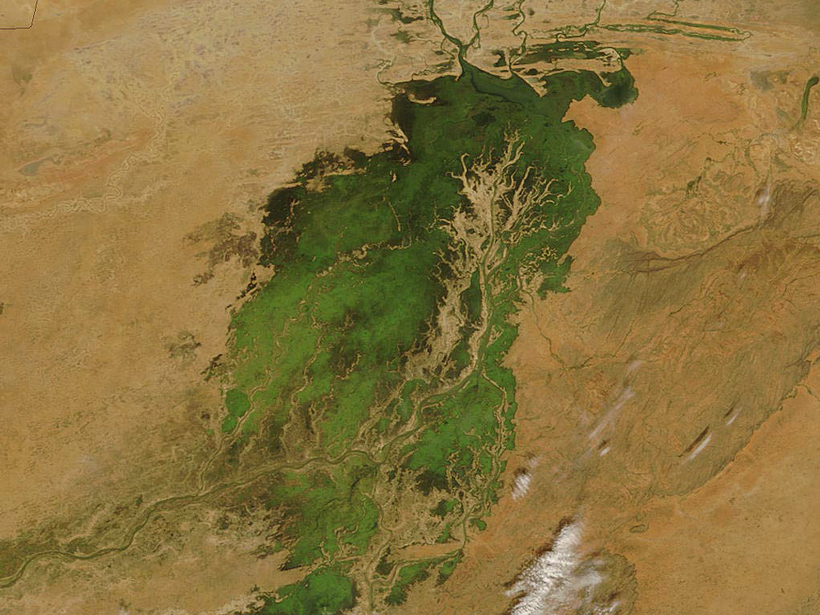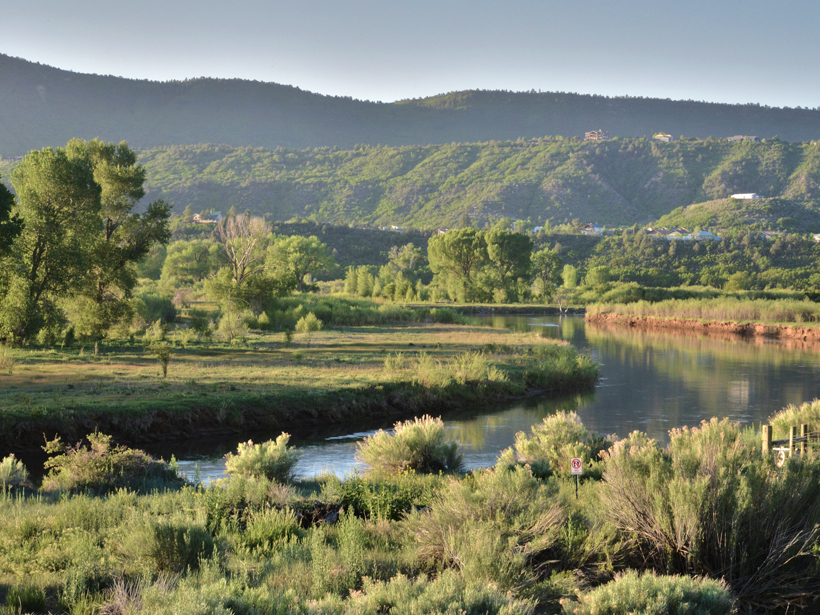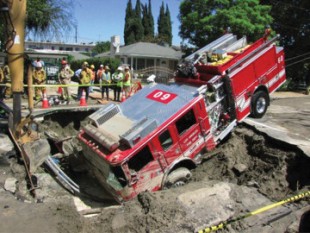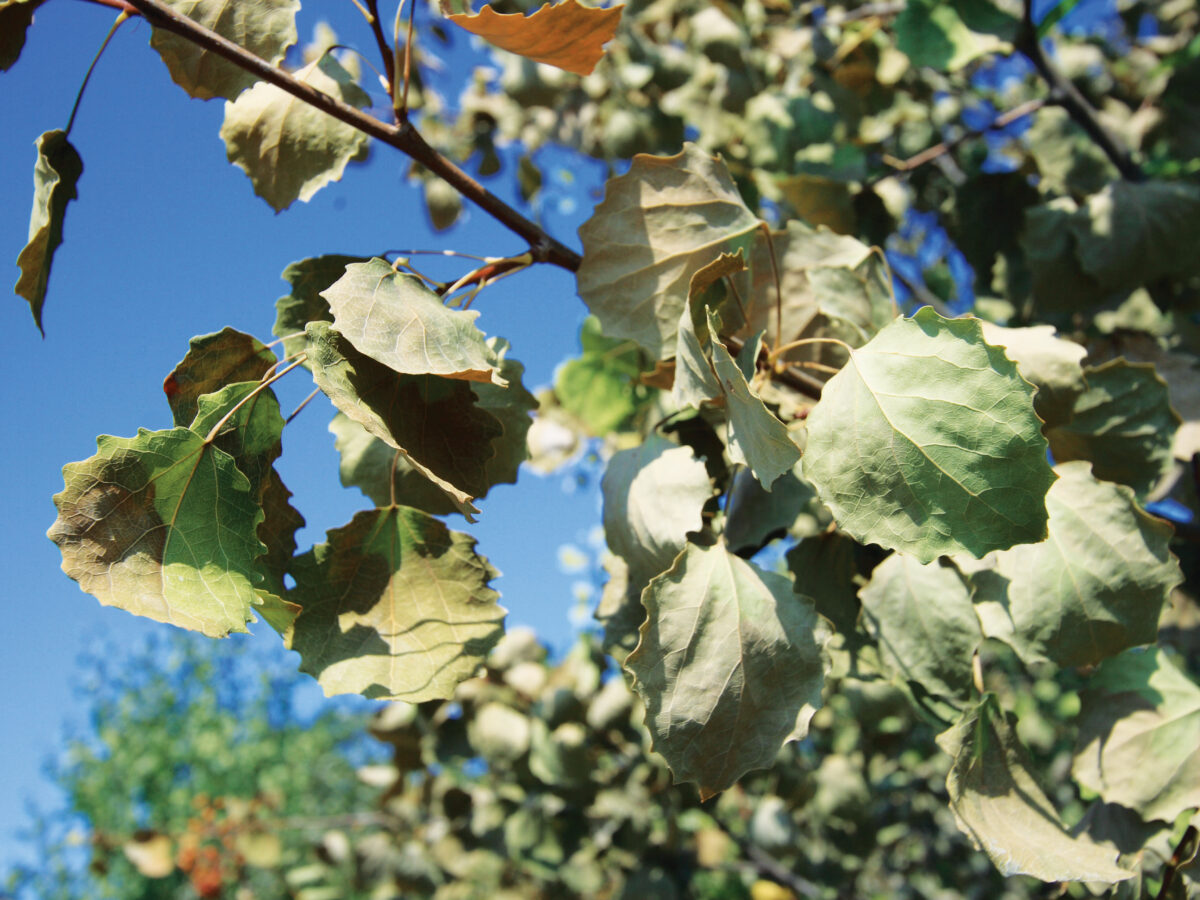Editors discuss the importance, influence, and evolution of the American Geophysical Union's hydrological research journal, covering one of our planet's most complex and precious resources.
Water Resources Research
Night Lights Illuminate Human Presence near Rivers
Nocturnal satellite imagery and other fine-scale data could improve global water resources management.
What Climate Information Is Most Useful for Predicting Floods?
Basing forecasts on data that preserve variations over space yield more reliable predictions than using standard numerical measures of climatic cycles' intensity.
Rainfall Fluctuations Hinder Projections of Future Extremes
Long-period oscillations in rainfall make even long records less useful for predicting future extremes.
Satellite Measurements May Help Real-Time Water Management
Upper Niger River study shows that satellite altimetry could help resource managers optimize reservoir releases even on ungauged rivers.
Inflexibility of Some Hydrological Models Limits Accuracy
Reducing the number of fixed assumptions may improve the accuracy of complex process-based models.
Improving Hydrology Models for a Changing Climate
How can scientists make a hydrology model that can predict water flow in an uncertain future climate?
Epidemiology Can Help Predict Urban Water System Failures
How are broken water pipes like fatalities in a heat wave? Researchers look to an epidemiological model to better care for infrastructure.
A Simple Model to Calculate When Drought Causes Plants to Die
Scientists create a mathematical model to predict when drought pushes plants to die.
A Model to Predict When a Cholera Outbreak Might Hit the Congo
Researchers determined the environmental conditions most likely to trigger a cholera epidemic in a region in eastern Congo.



